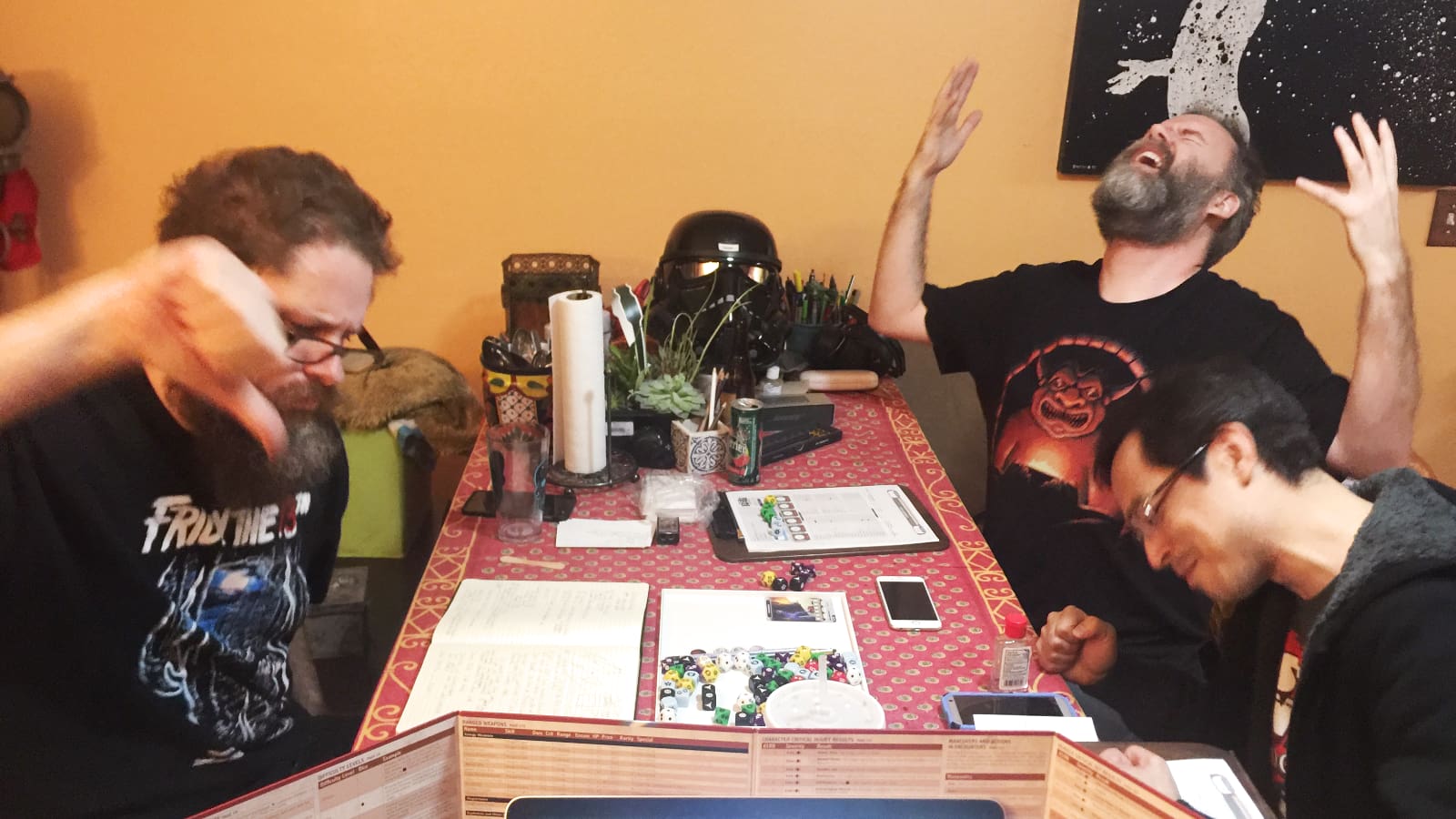Improve Your Game
Get on the Same Page
Ever been in a game where the rules didn’t feel quite right, the players and the gamemaster were at odds with each other, and every session seemed like a slog? Thankfully you can use well-established techniques to improve your game. They work whether you’re in the middle of a campaign or just about to start one.

Chris Chinn’s The Same Page Tool will help you improve your game. Gather everyone around a table and go through the questions one at a time, and make sure everyone agrees to the choices you make. This is an important process because it reveals hidden assumptions and eliminates potential confusion later.
The Same Page Tool helps define the campaign, but you can also improve your game by defining expectations for the nuts and bolts of making the game run from session to session. Use a social contract, which is just a set of guidelines covering things like what to do if someone can’t make a session, how frequently the group will meet to play, and so on. Adam Dray’s list of issues to discuss provides an excellent overview.
Evaluate Rules Complexity
People frequently talk about crunch in games. Low-crunch games have less complex mechanics, high-crunch games have more. While opinions vary on individual games, in general the more times you have to consult the rulebook during gameplay, the higher the crunch.
Less complex rules don’t always equate to ease of play; there are also some games that are defined as rules-light or low-crunch but can still require some effort to translate into a smooth gaming experience, particularly for a group that has spent years playing games that have different design goals. For example, Fate Core has been described as a low crunch game, but the nuances of the system can be challenging for players who are used to games that hew closer to D&D.
Thinking up front about what level of complexity you want to embrace will help you narrow your options later, find the right game for your needs, and improve your game play. Keep in mind that discussions of crunch are rough approximations, and most gamers can and do flip between crunch levels depending on the game and the group in which they play.
About Gamism, Simulationism, and Narrativism
Hang out in any tabletop roleplaying forum for a while, and you’ll see the terms Gamism, Narrativism, and Simulationism (GNS) thrown around a lot. In previous versions of this site, I described them and the theories behind them in some detail. But I’ve come to believe that they do more harm than good, leading to more heat than light, and arguments where they need not exist. Just know that using them as shorthand when describing game rules or styles of play can lead to misunderstanding.
The Six Cultures of Play taxonomy of gaming styles is for me more useful, because it describes styles of play without falling into the GNS trap of attempting to explain the supposed emotional needs behind them. As you’ll see in the comments, not everyone agrees with the Six Cultures of Play model, but that’s a given for any descriptive framework for tabletop RPGs.